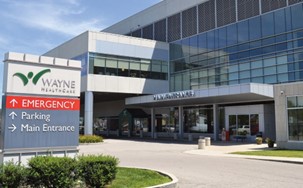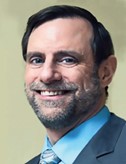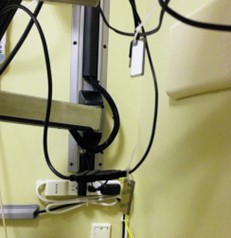Community Hospital Finds RFID Is a Good Fit

Wayne HealthCare is a 100-bed Hospital that has been serving the Greenville, Ohio, community for nearly 100 years. The facility employs more than 175 doctors, nurses and clinicians and has a 400-person support staff and hundreds of volunteers. But with a seven-person IT department, Wayne HealthCare had to outsource its annual inventory of IT assets, including computers, monitors, printers, networking equipment and peripherals. The inventory is required as part of a systems security audit. Each year, it took four contracted workers three days to inventory the 3,400-plus IT assets spread across the six buildings comprising the Greenville campus.

In 2013, Shelton Monger, Wayne HealthCare’s chief information and corporate compliance officer, began looking for a way to reduce the time and cost of conducting the inventory counts. Having spent 28 years in the U.S. Air Force, in both active and contract duty, during which RFID was widely used for asset management, Monger was quite familiar with the technology and its benefits. Based on his Air Force experience, he was confident that using RFID to manage the hospital’s IT assets would deliver a quick return on investment. As a member of the hospital’s senior leadership team, he had budget control and the autonomy to allocate funds for the deployment.
In 2014, Wayne HealthCare deployed an RFID asset management solution. The project delivered an ROI within a year—and that inspired Monger to consider how the technology could improve other hospital operations. One area in which he thought RFID could have an impact was on patient care. Wayne HealthCare’s five- to-one patient-nurse ratio reflects its strong commitment to patient satisfaction.
The hospital performs approximately 10 surgeries daily in its Ambulatory Care Center, though on some days it can perform more than 20 procedures. Family members or friends typically remain in the waiting room while a procedure is taking place, and they frequently ask the one staff member who manages the waiting room about their loved ones’ status.
Monger knew that keeping family members informed was very important to patient satisfaction, but it was difficult for one person to obtain frequent updates—whether a patient was waiting for a procedure to begin, was in an operating room or had been moved to the recovery room—and respond in a timely manner. The hospital required a more effective way to communicate patient status to loved ones.
In 2015, Wayne HealthCare implemented an RFID patient-tracking system. “Keeping patients informed is part of our commitment to excellence in the patient experience” Monger says.

Managing Assets
While many larger hospitals with more resources are reluctant to invest in a relatively new technology, Monger saw things differently because, he says, he understood the value of RFID. He contacted Aware Innovations, a full-service IT solutions provider and systems integrator in neighboring Dayton, Ohio. Monger was familiar with the firm from his work in the Air Force, and for more than a decade, he served with the company’s founder, Chuck Evanhoe, on a neighborhood association board of trustees. Evanhoe also is chairman of AIM.
Since the project’s goal was to inventory assets, Evanhoe recommended identifying items with passive ultrahigh-frequency RFID tags and using handheld readers, which would reduce system costs. The assets are identified via Omni-ID tags—the Flex (a label designed for tracking laptops and other office equipment), the IQ400P (a small label for plastic and non- metal items) and the Prox-NG (a small tag for IT assets). One of Monger’s staff members spent roughly 120 days RFID-tagging all of the IT assets, as well as new items as they arrived.
The hospital only needed to purchase a single Alien Technology 9011 handheld reader. The reader captures each tag’s unique identification number and transmits that data via the hospital’s Wi-Fi network to the Aware’s ItemAware software, which runs on a local server. The software has a management dashboard to monitor assets and provide reports, including those needed to comply with the annual audit.

It now takes one employee less than two days to con- duct the annual audit, Monger reports. “The technician simply enters each room, and the reader picks up every- thing that’s in the room,” he says. “No line-of-sight is required. It’s no longer the incredible chore it once was.”
In addition, Monger says, “Now that we know where assets are, usage is up significantly.” In the past, he explains, some assets were hidden from view or moved from one department to another. Not having to replace things that were “lost,” he says, is a significant benefit.
Monitoring Patients
The Centers for Medicare and Medicaid Services requires that all U.S. hospitals conduct patient satisfaction surveys. Wayne HealthCare always scored well on these surveys, but continuous improvement has remained a priority for the hospital. Not all purchasing decisions at Wayne HealthCare are made solely on the basis of ROI, Monger notes, adding that the decision to invest in a patient-tracking solution was driven by the desire and need to satisfy patients.
To explore how to keep patients’ families and friends better informed regarding their surgical status, Monger convened an interdisciplinary team, with members from IT, perioperative services (surgical staff), nursing and facilities. Evanhoe also consulted on the project. The team determined that a primary consideration was to accommodate the existing surgical processes without changes.
Developing a solution appropriately scaled for the
size and needs of Wayne HealthCare’s ambulatory surgical center was the initial challenge, Evanhoe recalls. A passive RFID system would be most cost-effective, he says, but tracking individuals via passive RFID is difficult since the radio waves do not pass through or end up being reflected by the human body. Tag selection and placement were important and required a lot of trial and error. “We had a great partner with Wayne,” he states. “They worked with us to understand the processes, limitations and desired outcomes.”
The team first tried tracking patients with RFID- enabled wristbands. But with the passive tag in the wristband so close to the skin, and the antenna in the ceiling located up to 15 feet away, they could not obtain consistent and reliable reads. They decided that, with an average of 10 patient beds circulating the unit each day, tracking beds would be the most effective approach.
To identify the beds, Aware used custom-designed Alien Technology ALN-9728 EPC Gen 2 passive UHF RFID tags. Each tag has a perforated section with a patient ID number that can be torn off and handed to family members. The portion that remains is inserted into a sleeve affixed to the end of the patient’s bed. Aware supplies the tags pre-printed with unique patient-identification numbers.

Four Alien ALR9900+ fixed readers and six Alien ALR 8696C antennas were installed beneath ceiling tiles in the Ambulatory Care Center: at the ingress and egress doorways of the pre-op/post-op area, procedural room, operating room suite, recovery room, inpatient entrance/exit and OR rear entrance/exit. The system was designed to require only one antenna per doorway, since direction is indicated by the last location read.
Aware custom-designed a software platform and a Java application using an MS SQL database. Wayne HealthCare installed a console in the waiting room that displays patient status. Patients are identified by their ID number to maintain privacy.
“The system is designed to be self-sufficient,” says Angie Lakes, a registered nurse and Wayne HealthCare’s director of perioperative services. “We put the tag on the bed, share the number with the family in order to maintain anonymity in the waiting area, and the system takes care of itself. The patient tracking is appreciated by the families of our surgical patients and even comes up as a positive factor in patient experience surveys.”
It took roughly a year to develop, test and implement the patient-tracking solution, Monger says. Now that it’s boosting patient satisfaction, he plans to determine if it can deliver additional benefits, such as improving workflows by examining the amount of time patients spend in each step of the process.
Monger believes all hospitals, no matter their size, can benefit from RFID. “Literally, there is nothing not to like about the systems,” he says. “They are better for our staff, better for our patients and better for our bottom line. We’re proud to be pioneers at the community hospital level and expect we’ll find other uses for AIDC [automatic identification and data capture] in the near future.”
